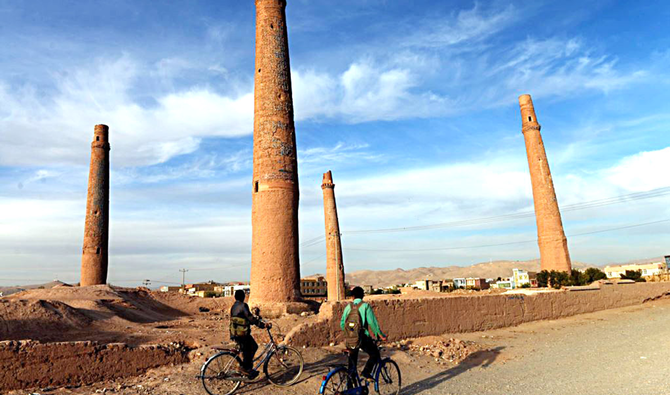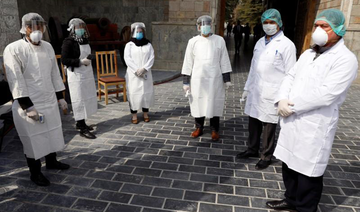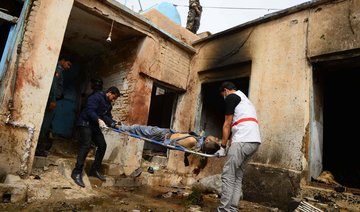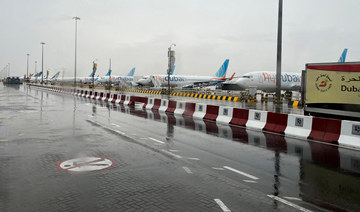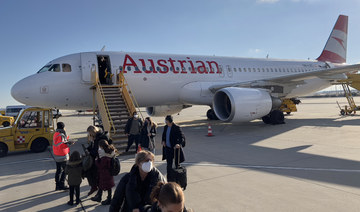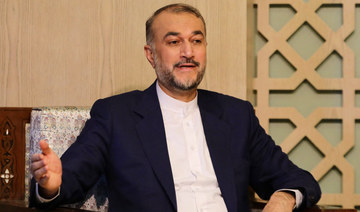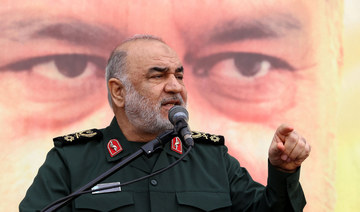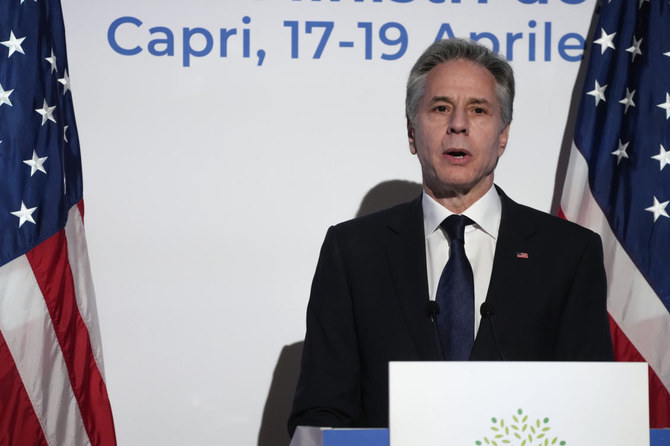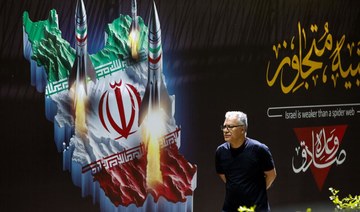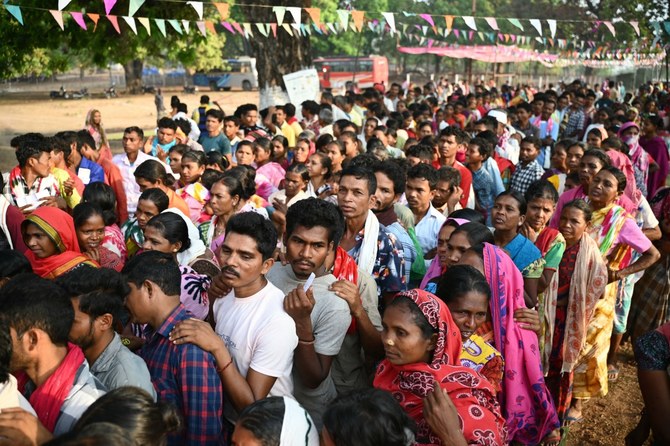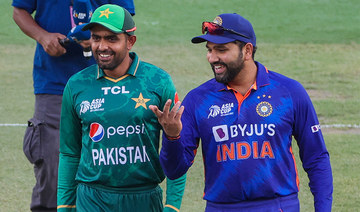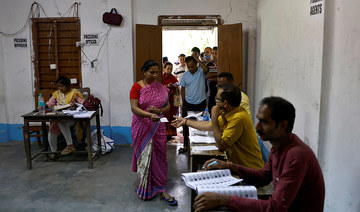KABUL: It has survived 40 years of war, but an iconic tower in Afghanistan’s Herat province, one of the five known as the Musalla Minarets, could soon topple over due to natural wear and tear and lack of restoration efforts.
“The minaret has bent nearly 60 degrees because of natural changes such as floods, earthquakes and other disasters. It needs urgent attention,” Arya Rawoufyan, head of Herat’s Information and Culture Department, told Arab News.
Built in the 15th century by Timurid Queen Gawhar Shad Begum, the minaret measures 100 feet in height and nearly 3 meters in width. Cars were allowed to drive between the minarets until as recently as 2007.
“When it started to damage the structure, authorities placed a ban and built a blockade, but some cars still drive through,” Rahima Jami, a lawmaker from Herat, told Arab News. Historians credit Queen Gawhar’s keen interest in art and culture for the construction of the site’s original madrassa complex which, at its height, housed 20 minarets.
That was until 1885, when most were destroyed by British forces during the conflict with Russia.
Herat would later bear the brunt of the Soviet occupation of region and the subsequent wars that followed, until the Red Army’s departure in the 1980s.
Today, only five minarets remain from what was once a “shining example” of Mughal architecture.
“The minarets are part of what was once a brilliantly decorated complex of Islamic learning and devotion in the region, along the Silk Road in western Herat,” Rawoufyan said. Considered a cradle of art and culture in Afghanistan, Herat is its second-largest city and borders Iran and Turkmenistan.
Famous for a wide variety of foods, such as grapes and saffron, and local handicrafts including exquisitely designed carpets, Herat has long been a hub for trade activities within the region and other parts of the world.
It gained prominence after Genghis Khan conquered several Afghan cities, including Kabul and Herat, and from there moved on to Iran in the 13th century. Once his army left Afghanistan, Herat remained under Mughal rule for years and eventually became home to prominent Persian poets, scholars and artists.
The minarets which once “stood out on the dry expanse of land in the area” are today punctuated by old and new houses and shops that have sprung up in recent years.
For years, authorities have tried to get the remnants listed as a World Heritage Site by the United Nations’ cultural agency, UNESCO, but have failed due to the deteriorating condition and a lack of resources to restore the minarets back to their former glory.
To facilitate the restoration efforts, former President Hamid Karzai had asked Germany, France, Italy and India, through UNESCO, to help prevent the minarets’ destruction.
“So far, none of the nations has come forward, but UNESCO paid more than $250,000 for the fortification of the five minarets’ foundations and for building a wall sealing a road that passes through the minarets complex, where traffic was once a major threat,” Rawoufyan said.
And while UNESCO rose to the occasion, and Kabul is willing to cover restoration expenses, authorities said they would be able to evaluate the total cost involved only after a “technical assessment” of the site.
“It is beyond the ability of Afghan engineers to rebuild it from a technical and resource point of view,” Rawoufyan said.
However, even if officials succeed in restoring the worst-affected minaret, Rawoufyan said Afghanistan might not be able to meet UNESCO’s criteria for the World Heritage List as “several boxes” remain.
“Unchecked developments, new high-rise buildings near the minarets, red tape and the municipality’s inability to stop their construction has changed the character of the area from being old and historical, which are key criteria,” Rawoufyan said.
Jami added that some vehicles still use the road that goes through the minarets and blamed Kabul for “not paying attention” to the destruction of a world treasure.
“This is our national asset and part of Islamic civilization and must be protected under any cost,” she told Arab News.
Haji Rafiq Shaheer, a historian and civil society activist, agreed, and questioned why “despite technological advances,” the government was unable to restore the structure.
“How come in the past, with limited resources, we managed to build over a dozen such minarets? But today, with so much advancement and progress in all fields we cannot? It’s a shame that we cannot protect this icon which depicts our history, authority and honor,” he told Arab News.



